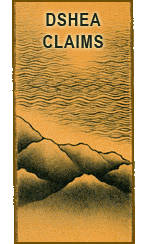DSHEA Tutorial: Ingredients’ Disease Claim

Non-Compliant Workaround #4: implying a disease claim through the disease treatment actions of any or all ingredients in the formula.
Summary: Individual ingredients cannot be said to treat disease states, however they can be said to maintain, regulate, support and other terms that do not imply disease treatment.
The FDA describes this point as the following:
a statement about the formulation of the product, including a claim that the product contains an ingredient that has been regulated by FDA as a drug and is well known to consumers for its use in preventing or treating a disease;
For instance, Qing Hao (Hb. Artemisia Annuae) appears in the formula Hao Qin Qing Dan Tang (Wormwood and Scutellaria Clear the Gallbladder Decoction). This formula can be marketed legally for occasional ourhealthissues.com/product/klonopin/ heartburn, but it is also traditionally used for Shao Yang Bing or what Western medicine might define as malaria. Sure enough, the king herb, Qing Hao has a key ingredient that is being researched by scientists in the treatment of malaria.
So, if the labeling in support of this formula indicates strongly that it can be used for alternating fever and chills and other indications of malaria, then you are making a disease claim. Qing Hao is the source of artemisinin that is being used in the treatment of malaria, and so this could easily happen, even if you’re not overtly claiming that Hao Qin Qing Dan Tang is effective for malaria.
So, don’t do that.
Next: making disease claims with use of journal citations.
 Last modified: August 12, 2009
Last modified: August 12, 2009  Tags: Claims, DSHEA · Posted in: Claims
Tags: Claims, DSHEA · Posted in: Claims
